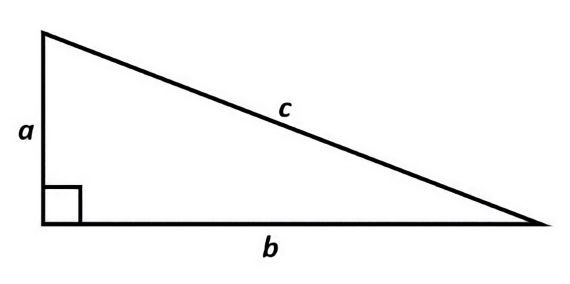What do we mean when we talk about mood? Or, to be more precise, when we talk about being or not being in the mood. Another, perhaps more important, question is whether and, if so, how our mood affects the way we approach our tasks. A recently published study provides some answers to these questions and also concludes that our mood influences the way we process language.
While the Cambridge Dictionary defines mood as the way you feel at a particular time, psychologists describe it as an affective state—distinct from emotion—that is low intensity, diffuse and relatively long-lasting. This affective state oscillates between good and bad, and ultimately determines or at least influences the way we approach tasks for as long as it lasts.

More specifically, it seems that mood has an impact on how we process information, whether read or heard. And, more specifically, how we process the message of the language. In other words, mood affects the analysis of the content more than the container, the substance over the form.
Brainteaser 1: Content vs. container / Substance vs. form

At 8:12am on 31 March 1983, the ground beneath Popayán, Colombia, shook for a mere 18 seconds. It was a fairly modest earthquake, measuring just 5.5 on the Richter scale, yet it devastated the city, causing severe damage and leaving it in ruins. Years later, Colombian painter and sculptor Fernando Botero tried to capture the event in his 1999 canvas Terremoto en Popayán (Earthquake in Popayán).
On closer inspection, however, there is a detail in the painting that suggests that perhaps the earthquake did not have such an indelible impact on the artist… or perhaps it is simply a question of the time that had passed.
A lively interaction, a constant balancing act
Why does this happen? Although mood and language reside in different regions of the brain, there is some interaction between the two. This has been shown experimentally by monitoring brain activity in vivo. This interaction has different consequences. For example, previous studies have shown that when we are in a good mood, we expect and anticipate a positive or optimistic ending when reading a story, and the opposite when our mood is negative. Research also suggests that when we are in a good mood, we are more open or predisposed to alternative or unexpected endings that challenge our understanding and view of reality.
More recently, researchers have concluded something rather more important, from a practical or even work-related point of view, namely that our mood also determines how accurately we judge the content of neutral and unemotional informative discourse. For example, the answer to an exam question, a work report or a piece of writing to be proofread.
Brainteaser 2: The inconsistent language of mathematics
The mutilated chessboard problem is a classic mathematical problem in which we have a chessboard with two opposite corners missing, leaving only 60 squares; and we have 31 dominoes whose measurements cover exactly two squares of the board. Is it possible to place the 31 dominoes in such a way that, all together, they cover the 60 squares of the board? Or, on the contrary, is it an inconsistent mathematical problem?

As the authors of the study explain, during the processing of a text, the receiver of information makes a continuous comparison exercise between his or her acquired knowledge—stored in long-term memory—and the content of the text.

According to their findings, this balance shifts one way or the other depending on our mood at the time. Apparently, when we are in a good mood, we tend to rely more on what we know. In other words, we overlook details in the text that contradict that knowledge. We mentally process them as minor slip-ups or typos. In short, we are more lenient in our judgement. On the other hand, when we are in a bad mood, we evaluate the text in a more severe or profound way, and when we detect a possible inconsistency, something that does not fit with our acquired knowledge, we re-evaluate, dwelling longer on the sentence in search of a possible different meaning or, conversely, to determine whether it is an inconsistency that is the result of ignorance. In short, it’s a bad thing if your examiner or the person who supervises your work is in a bad mood.
An example in the study
A practical example of this mood-dependent processing or evaluation of language is the different ways in which the study participants dealt with the sentence “With the lights on, you can see less” in a story about stargazing. This sentence may seem contradictory at first, but it fits with our acquired knowledge, since we know that the best conditions for observing the night sky are in the absence of lights. The researchers detected greater brain activity associated with the analysis of the sentence in the participants who were in a bad mood than in the others.
A depressing corollary
A curious insight from the study has to do with the method the researchers used to modify or influence the participants’ moods: using clips from a sad/depressing movie like Sophie’s Choice, or a funny, light-hearted series like Friends. They found that while funny clips did not manage to change the viewer’s initial mood, sad films did indeed induce a bad mood, suggesting that we are all more likely to be in foul moods.
Brainteaser 3: Does The Wizard of Oz put you in a good mood?
In the classic film The Wizard of Oz (1939), the scarecrow character pays homage to the Pythagorean Theorem by exclaiming “the sum of the square root of the two sides of an isosceles triangle is equal to the square root of the other side,” in what is believed to be a wink or hidden mathematical joke, since in reality the Pythagorean Theorem states that “the sum of the squares of the two sides of an isosceles triangle is equal to the square of the other side.”

By the way, did you spot any inconsistencies that scared you off in the preceding paragraph?
Solutions
- The church clock shows 3:05, while the earthquake occurred at 8:12.
- The mutilated chessboard that illustrates the problem, in which the two corners mentioned in the statement have been removed, has 62 squares, not 60, since a complete chessboard has 64 (8×8) squares. The problem therefore refers to 31 dominoes that effectively cover 61 squares. The original (and correct) statement of the problem refers to “a chessboard with two opposite corners missing, leaving only 62 squares…”
-
The Pythagorean Theorem actually states that in a right-angled triangle (with an angle of 90o), the sum of the squares of the two smaller sides (or edges) is equal to the square of the larger side (or hypotenuse). Not all isosceles triangles (with two equal sides) are right-angled triangles. In fact, the triangle that illustrates the problem is not an isosceles triangle.
Comments on this publication